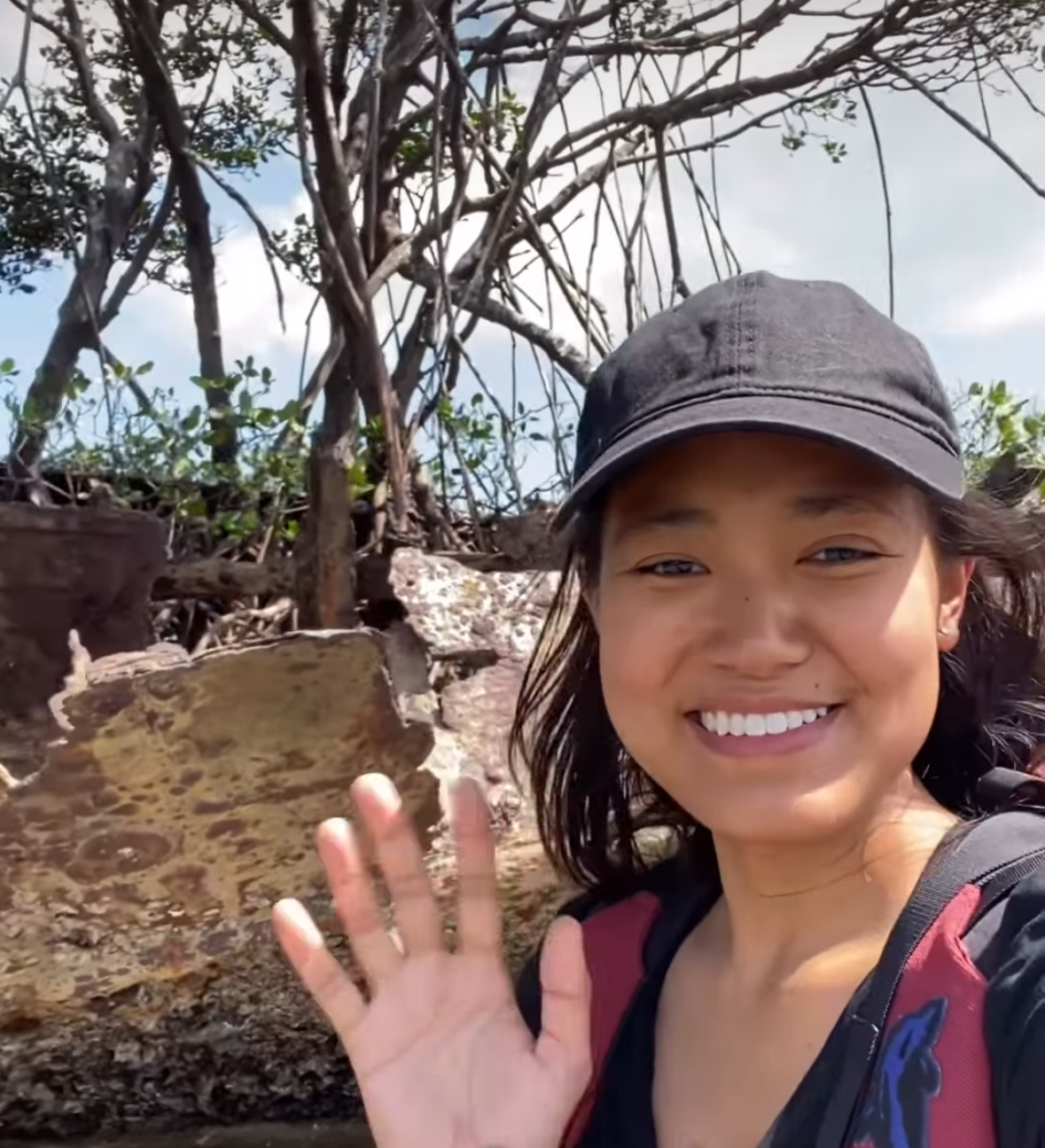An Unforgettable Adventure to Magnetic Island
Crystle, from Singapore is undertaking a PhD with JCU @JamesCookUniversity alongside the Australian Institute of Marine Science @australianmarinescience, researching coral restoration through a method known as coral seeding. Crystle is one of the 2024 Study Townsville Student Ambassadors and recently participated in an ECO Tour on Magnetic Island, located approximately 30 minutes by ferry from Townsville, with other Study Townsville Student Ambassadors. Crystle shares her experience with us.
On a weekend in October, we embarked on an unforgettable adventure to Magnetic Island with MI Discovery Tours, exploring the lesser-known western coastlines that are often overlooked by visitors. As we soaked in the island’s beauty, we learned about its rich history and how it once served as a popular beach getaway for Townsville locals—before the mudflats of the Strand were reclaimed with sand. Magnetic Island wasn’t always just a tourist spot. In fact, its history is steeped in industry. Towering hoop pines were harvested for timber, granite was quarried, gold was mined, and corals were extracted for construction. But, as the island’s stunning landscapes began to draw more attention, tourism took centre stage.
One of the highlights was passing by the heritage-listed jetty at Picnic Bay and spotting the iconic blue house at Cockle Bay. You might not realize it at first glance, but just beyond the shoreline lies Cockle Reef, Magnetic Island’s largest fringing reef. However, we learned that this reef used to be even more expansive. The scars of coral mining remain—a massive pit, 300 meters long, 60 meters wide, and 3 meters deep, carved out when coral was extracted to fuel construction, a practice that’s thankfully illegal today.
Cockle Bay’s story is one of transformation. It was once home to vibrant coral reefs and pristine white-sand beaches, but the mining disrupted the natural water flow, eroding the coastline and creating a new habitat ideal for mangroves. Beyond the mangroves rests the haunting remains of the SS City of Adelaide shipwreck, only visible at low tide. This vessel ran aground in 1916, and over the last century, mangroves have taken root in its decaying hull. Today, Magnetic Island boasts an impressive 17 species of mangroves, accounting for nearly a fifth of the world’s total. It’s no surprise that 75% of the island is a national park, making it one of the three most biodiverse islands within the Great Barrier Reef World Heritage Area.
We ventured onto the salt-crusted mudflats, where the ground, hardened by the sun’s heat, crackled beneath our feet. Here, we were introduced to an intriguing plant that resembled a blend of seaweed and succulent—samphire, also called sea asparagus. It’s a salt-tolerant species, edible with a taste reminiscent of sea grapes.
Most visitors flock to Magnetic Island for a chance to see its famous koala population, the largest in northern Queensland. Despite there being about 800 koalas on the island, spotting one is far from easy. Our guide taught us how to look for scratch marks on eucalyptus tree trunks, signs that a koala may be nearby. We even learned that scientists track the koalas by examining their scat—fresh koala droppings are soft and green, gradually darkening as they age. I cringed a bit when our guide boldly sniffed the scat, declaring it smelled herbal, but I decided to just take his word for it!
Our journey also took us to MINT (Magnetic Island Network for Turtles), where we met Flash, who walked us through the vital work of the island’s turtle rescue center. We were introduced to two of their patients, Barney and Norman, a pair of green turtles recovering from illness. They arrived at the center suffering from infections, parasites, and malnourishment. Thanks to the team’s efforts and a diet of seaweed, fish, squid, and prawn, they’re on the road to recovery. Flash shared that the team is working to develop a culture of macroalgae to feed future turtle rescues, ensuring a steady food supply for future rescues.
A big thank you to Study Townsville for making this incredible experience possible and allowing us the time to truly explore the island. What a weekend to remember!
October 2024
Photo credit: Crystle Wee




